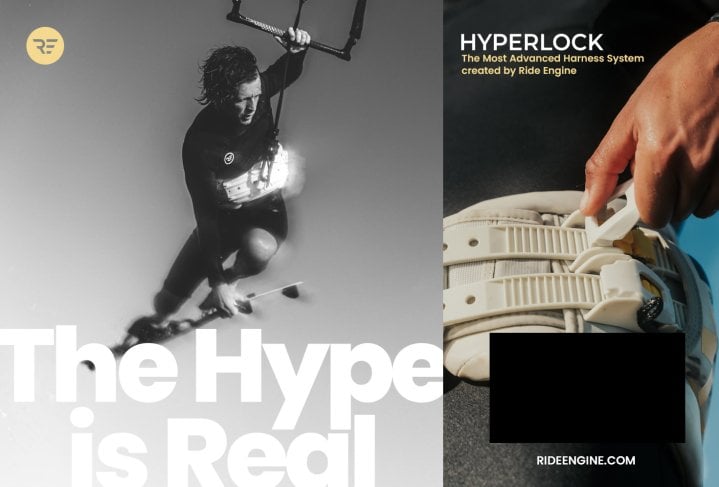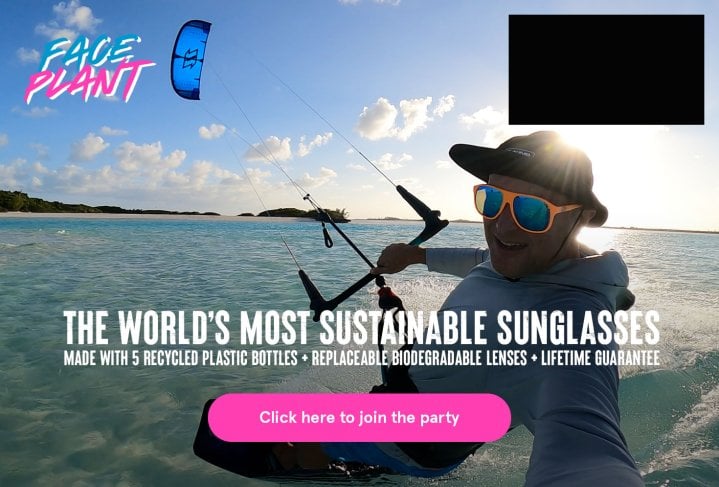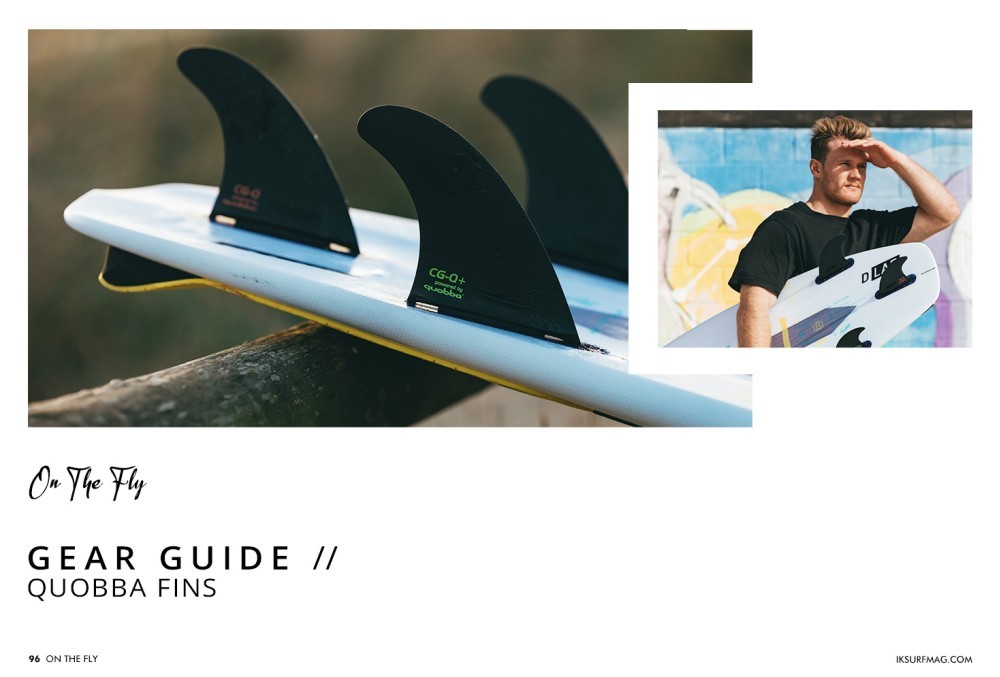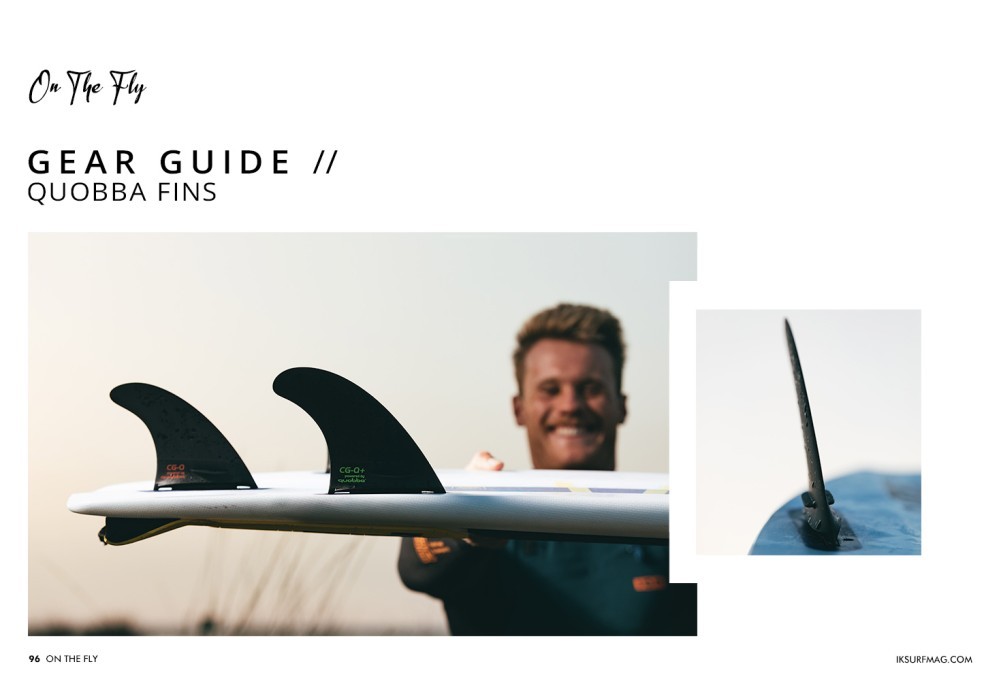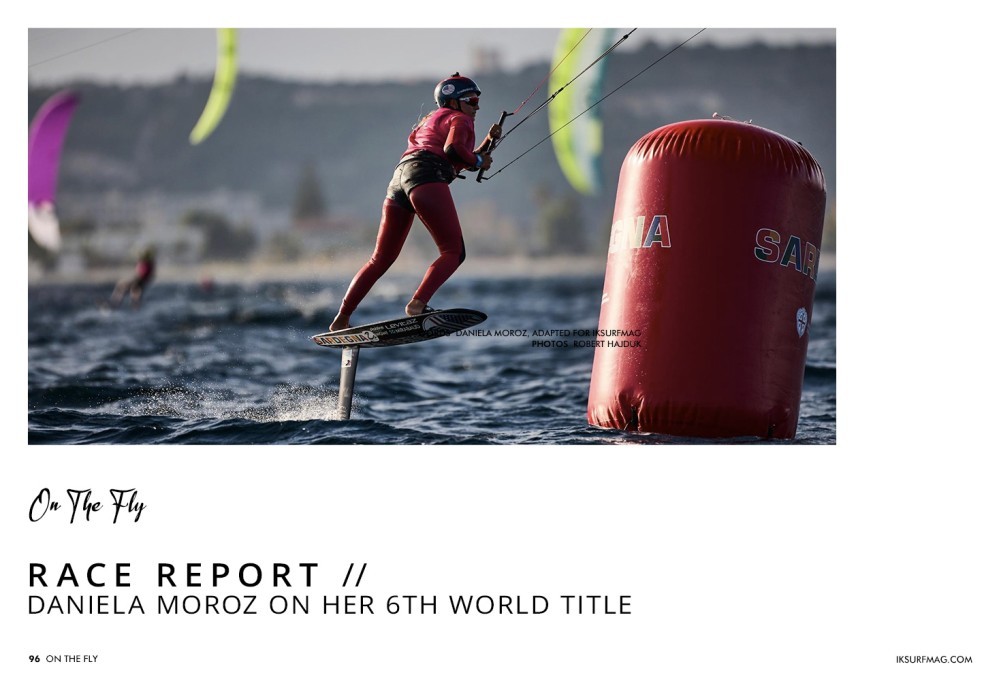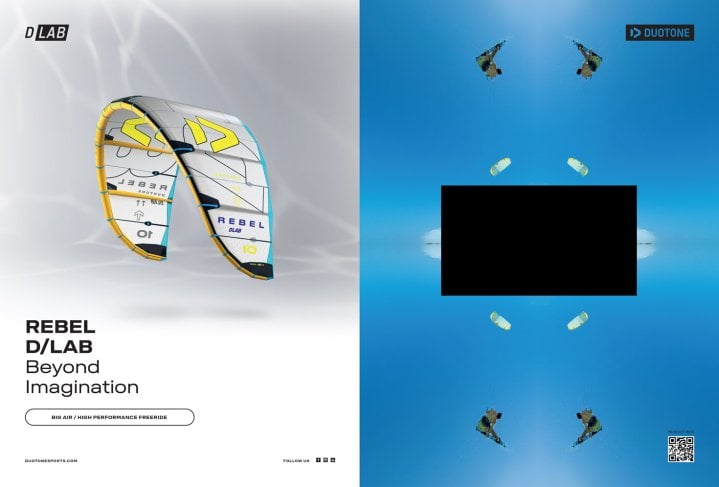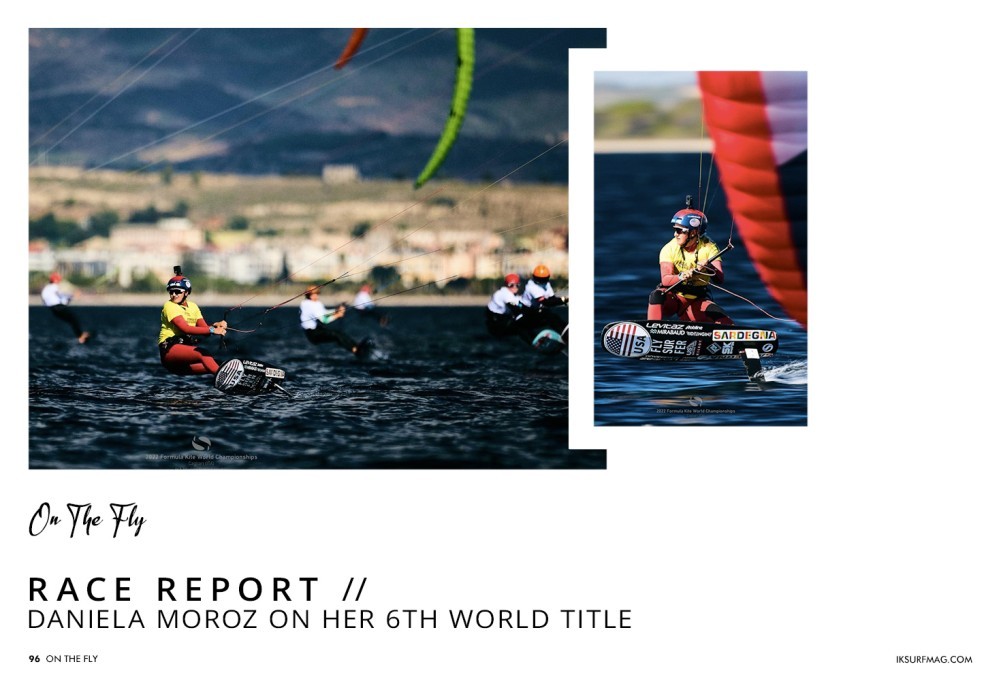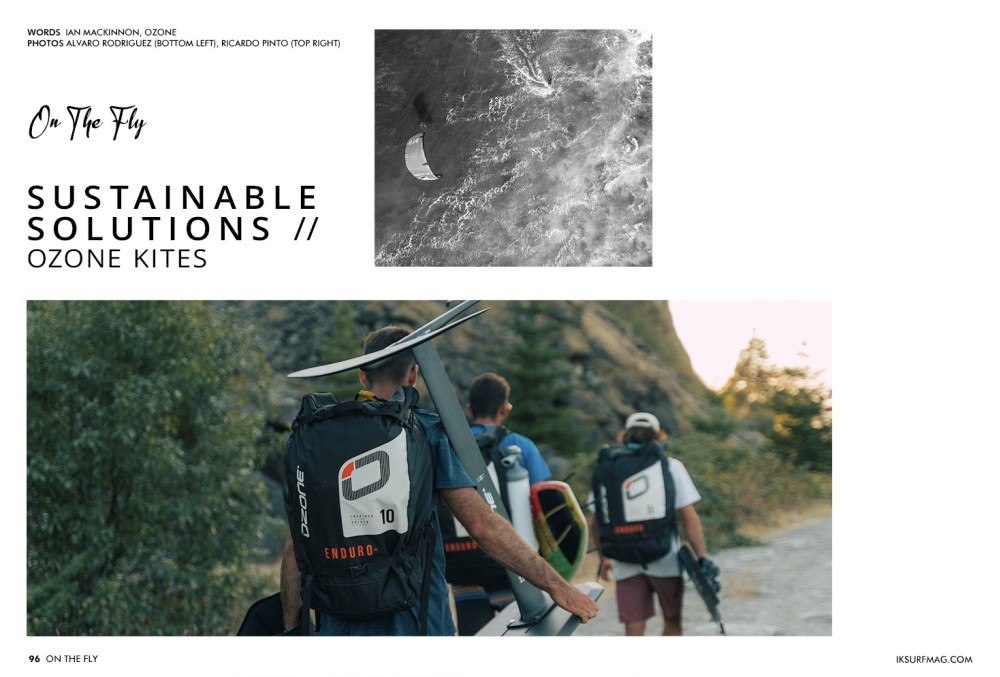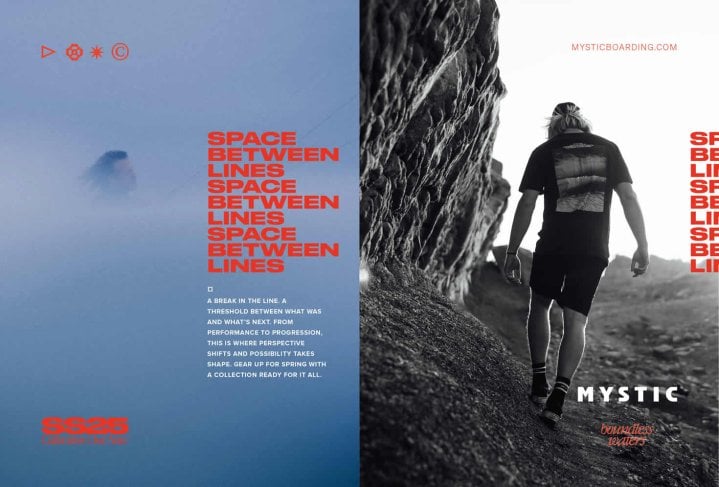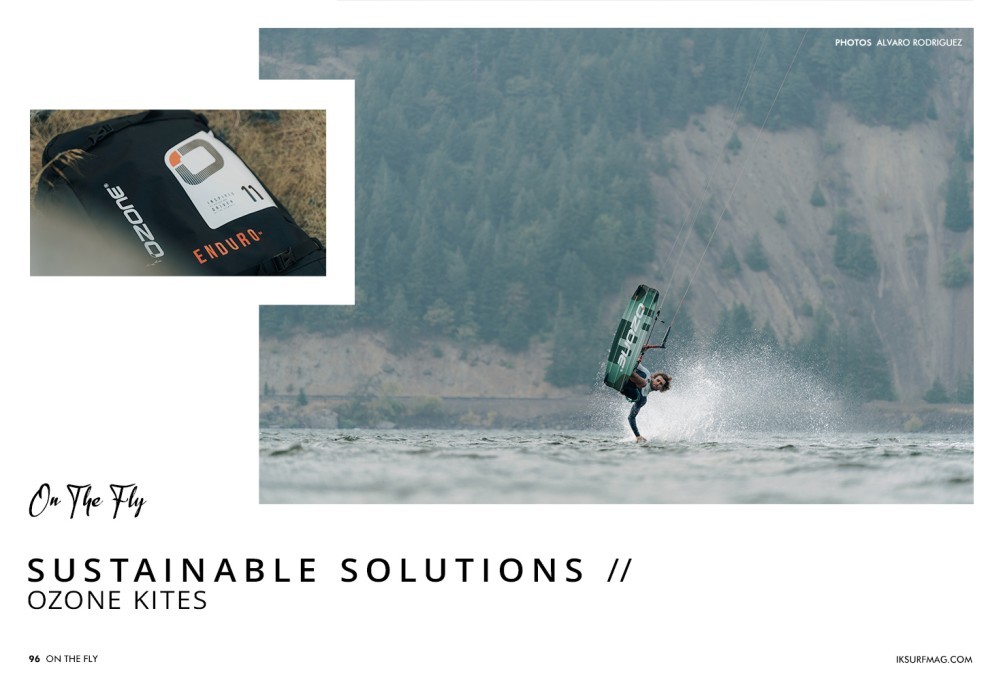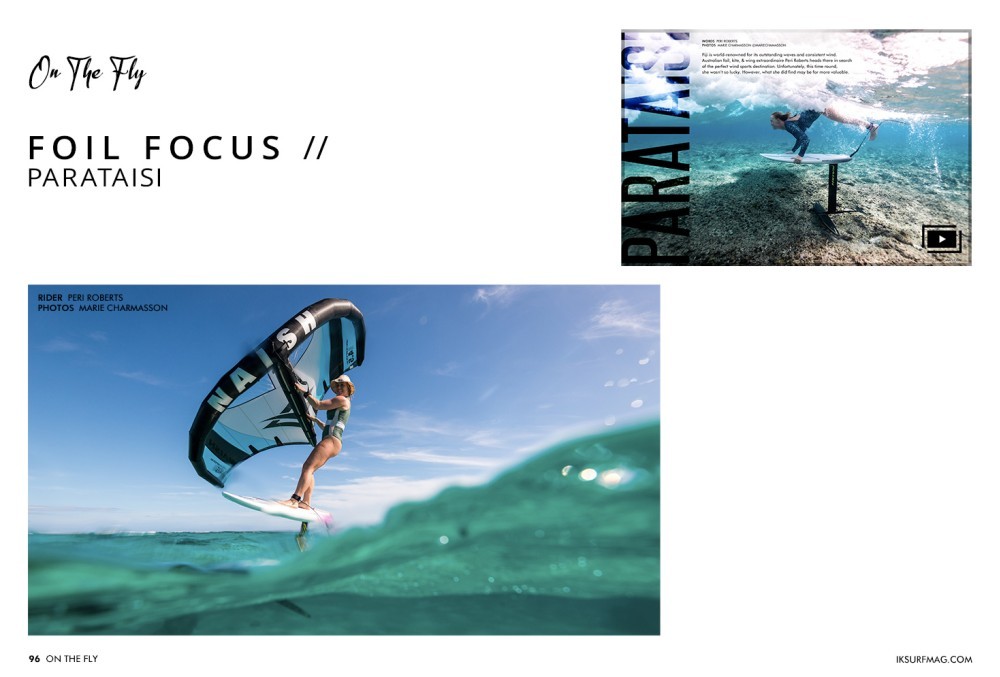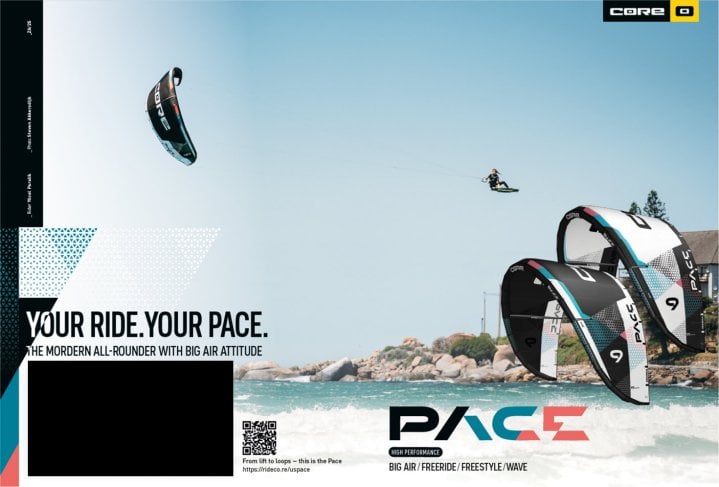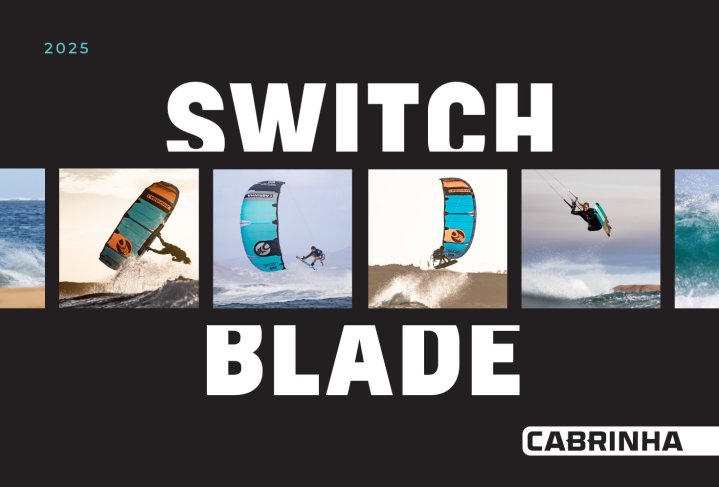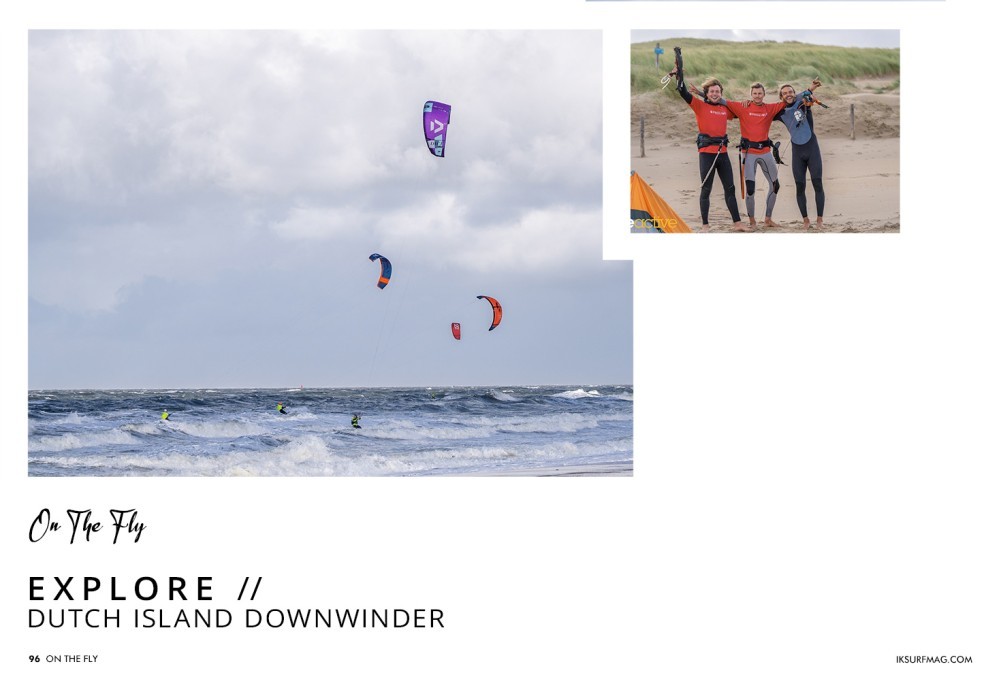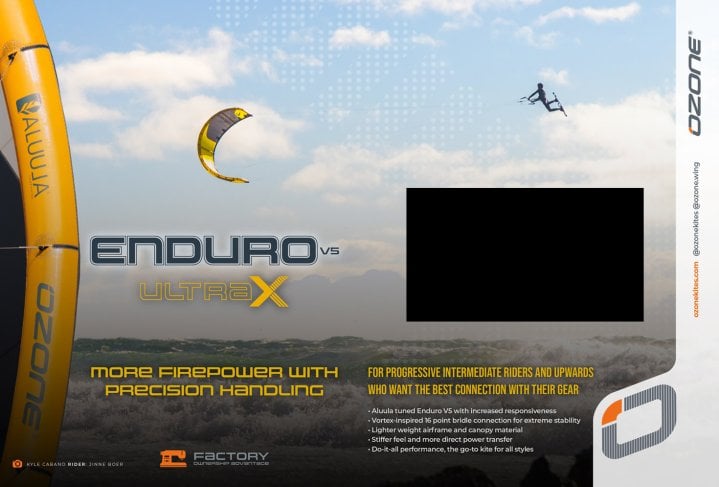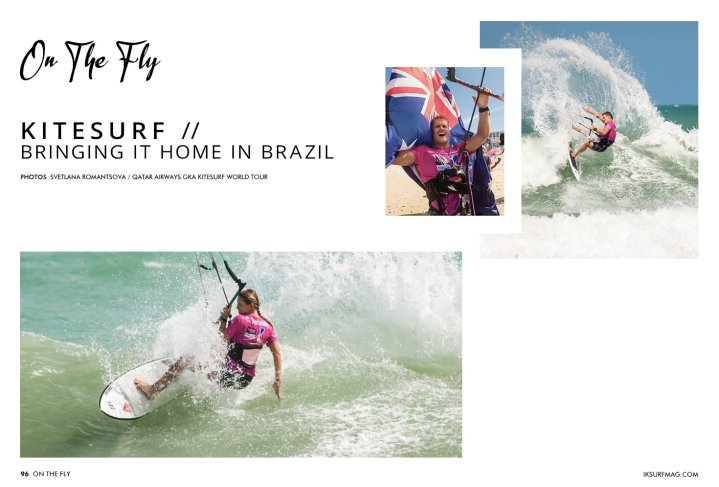
On The Fly
Issue 96 / Thu 15th Dec, 2022
On The Fly is your place to catch up on the latest news in the kiteboarding industry! Who’s winning World Championships? What’s happening downunder? What’s the latest in materials innovation? Why are so many extreme kiters Dutch? And.. what on earth is a Quobba?! It’s all right here! Stay in the know with On The Fly!
KITESURF // Bringing it home in Brazil
The final stop of the GKA Kitesurf World Tour saw two World Champions crowned in Brazil just a few weeks ago in a fiery competition that showcased a lot of local Brazilian talent. It was a tough road to the podium for the riders that came in leading the series, but the high level of riding made for a very exciting event!
It was a special event for Capucine Delannoy, who took her first-ever Kitesurf World Championship in the wave division after a dominant season that culminated in her taking out her closest rival, Frances Kelly, to earn the title. It's been a major year for Capucine, who also claimed a Big Air World Championship with the GKA earlier this year.
On the men's side, James Carew started this year as the defending champion, but he was put to the test by rivals Pedro Matos and Gabriel Benetton. Still, he's been riding strong all year and sealed the deal by winning both the event and securing his World Championship, his second in a row, in one of the toughest events of the year!
GEAR GUIDE // Quobba Fins
While raw talent goes a long way, most of the way, in fact, there is a point in kitesurfing where having the best gear makes all the difference. When it comes to wave riding, that might mean a faster-turning kite with plenty of drift or a board designed for the specific wave conditions you're riding in. Even something as simple as your fins can make a world of difference in your ride, and after seeing some of the top riders in the wave tour riding Quobba Fins, we had to get the low down...
The surf industry, as a whole, designs its fins around the idea that the tip of the fin creates the most trailing turbulent drag. However, after extensive Computer Fluid Dynamics analysis on a thruster fin setup, it was apparent that most of the drag actually comes from the base of the fin, closest to the board. Using this new data, Quobba Fins have invented a fin shape that is designed to reduce this drag, using patented technology to substantially minimise the trailing turbulent drag found around standard surfboard fins. This is the key difference between Quobba Fins and other traditional designs.
With this unique design, kiters and professional riders who use their products, like 2x World Champion James Carew, have noticed higher speed, more stability, especially when riding at speed, and smoother sailing in choppy waters.
You may have spotted Quobba fins on kitesurf boards in the past, and they were known for their signature orange and lime green colourways. But, these bright colours are being phased out in favour of their newest models, Carbon Glass and Dark Glass. We asked what inspired the change, and the team at Quobba fins explained their approach:
"We live in a world where the signature of a surfer and the colours of a fin set up seems to be more important than the fin itself. We thought to give a simpler look supporting the following philosophy: Quobba Fins' passion is Surfboard fins, not artwork or signature names! We do surfboard fins, not artwork!"
Quobba Fins offers both single tab/Futures style and dual tab/FCS style in their Dark Glass and Carbon Glass series. The Dark Glass model is the most similar to the original Quobba Fins but with a simplified colourway.
The composition of a Carbon Glass fin includes 3% carbon fibre with a slightly stiffer flex pattern, which results in a much stronger fin! The Carbon Glass construction is their best-seller in the kitesurfing community, which puts a lot more stress on their fins than the average surfer.
Click here to find out more about Quobba Fins’ exclusive technology, and stay tuned for an exciting new product release coming from their team soon!
RACE REPORT // Daniela Moroz on her 6th World Title
I arrived in Europe at the beginning of September to start my preparation for the World Championships, giving me six weeks to train before the first day of racing. I made the decision to skip the European Championships to focus on preparing myself for the Worlds, and began working with my full-time coach Chris Rashley and friend and technical advisor Nate Housberg for two phases of training.
In Phase 1, I spent three weeks in Hyeres, France, testing the brand-new kites I had just received and strengthening in the gym to gain muscle mass. These things were vital in gaining back the speed I had been missing over the summer. In Phase 2, I trained at the venue of the World Championships, Poetto Beach, on the Italian island of Sardinia, just outside the city of Cagliari.
After two weeks at the regatta venue training in several different wind directions and sea states, I could not wait to get racing - I had never felt more ready to deliver my finest performance at a regatta. I was proud of the progress I had made in the weeks leading up to the Worlds, not only on the water but off. I met with a sport psychologist weekly to help me build a strong and confident mindset. I have been practising mindfulness, meditation, and visualisation. I had been working out and felt super fit. I felt so confident and ready in a way I had never felt before. And on October 11th, it was finally time to begin!
We started with 3 days of the opening qualifying series in which competitors are mixed in 2 separate fleets based on world rankings. I was the only competitor, male or female, to win every race of this qualifying series, but my closest competition, Lauriane Nolot from France, was only a point behind.
On day 4, the top 25 sailors went into the gold fleet, completing 4 races. It was a beautiful mistral day with 20-25 knots, eventually picking up with gusts to 30 knots, extremely gusty and shifty wind, and completely flat water. It was a day I had repeatedly experienced during training, and I knew exactly what I had to do. After a disqualification due to being over early (UFD) in the first race, I won the next 3 races, even finishing with a healthy lead of about 800m in the last race.
This scoreline kept me in first but still only a couple of points ahead of Lauriane, who was consistently finishing second. The next day brought more offshore wind, which was extremely light and patchy. I started the day a bit slow but progressed throughout the 4 races. Having entered the final race, I was 1 point ahead of Lauriane. I needed to stay ahead to maintain my first-place advantage heading into the last day of the regatta. I managed to do just that, and only needed to win one race in the final series in order to win the world title!
The final day brought the onshore wind back with some big chop. I was nervous but excited. It was time for the last final push. It was Katie Dabson (GBR), Ellie Aldridge (GBR), Lauriane Nolot (FRA), and me in the women's final. As I was waiting for our start, the wind picked up just a couple of knots, and the other girls went in to change from 15m to 11m kites. I opted to stay on my 15m, knowing I could match their speed upwind and be faster downwind. Lauriane took the lead right away, with me just windward. As we were approaching the top mark, Lauriane crashed, and I was able to take the lead. From there, I knew I just had to sail clean, and I could win this race. On my 15m kite, I quickly extended my lead on the downwind, and by the end of the second lap, I was 300m ahead in first place.
When I rounded the last mark and crossed the finish line, there was an overwhelming sensation of pride and joy, unlike anything I had ever felt. I immediately found Chris on his coach boat, and as I sat down, I said, "I think we got the job done."
Click here to read the full blog!
SUSTAINABLE SOLUTIONS // Ozone Kites
Ozone Kites has begun a pioneering collaboration with the outdoor clothing brand Patagonia to produce more sustainable canopy and dacron materials for kites and wings in a bid to raise the green credentials of the industry as a whole.
The tie-up between Ozone and the brand renowned for its concern for the environment started a number of years ago. But it was unveiled only recently when the two companies shared an "Ozone X Patagonia" stand at the AWSI expo in Oregon's Hood River, USA.
Several years of effort and testing have produced some promising advances, with a kite using primarily recycled materials given a first airing at the US expo. The canopy and dacron look and perform like virgin materials.
But the project has yet to achieve its ultimate goal of developing materials made of recycled content that can meet Ozone's demanding standards for high performance and longevity.
Once that goal is reached—and Ozone and Patagonia are confident it can be—the plan is not only to offer kite and wing products to Ozone customers but share the technology with the entire industry. It is a move very much in keeping with Patagonia's prioritisation of the environment over profit.
Ozone, concerned about the environmental impact of its products and production processes at its dedicated factory in Vietnam, approached Patagonia several years ago. Ozone hoped to tap into Patagonia's market-leading experience after it set out several years ago to use only materials that were "recycled, recyclable or regenerative".
In keeping with Ozone's tagline, "Inspired by the Elements, Driven by Nature", the kite brand asked Patagonia to help it find ways to become more sustainable, whether through better packaging, reducing waste or cutting the toxicity of its production processes in Vietnam.
Yet, ultimately the discussion between the companies moved on to the techniques and raw materials used to produce the canopy, dacron and other components. They are almost entirely made from petrochemicals, and Ozone wanted to find a way to reduce their environmental impact.
That led Ozone to ask some of the world's leading kite material producers to consider a collaboration to develop a new product. The aim was to make a canopy and dacron of mostly recycled plastics with the same qualities of strength and longevity that customers and brands have grown to expect.
Ozone's collaboration with Patagonia has been examining all the components of kites and wings from a sustainability viewpoint to find improvements. Not only have the materials gone under the microscope, but also coatings and the ink used for branding and logos, trying to find less toxic alternatives.
For several years the companies' collaboration has been working on water-based coatings, non-toxic inks and ways to find 100% recycled raw materials for the canopy and dacron.
Despite all the efforts, though, the reality is that many of the alternatives are unable to withstand the rigours of salt water and UV light almost always encountered when kitesurfing and winging.
The result is that the tie-up is currently putting back a percentage of virgin material into the canopy and dacron in order to attain the long-term durability and strength required by the industry.
Patagonia's Jason Slezak, long a leading light in kitesurfing and an environmentalist, was candid about the setbacks. The materials made of wholly-recycled content tested well when new, but with usage in a UV and saltwater environment, degraded more than was acceptable.
But Patagonia still relishes the opportunity to join Ozone in the ground-breaking project.
"It's been a really great opportunity to partner with a brand like Ozone and have this relationship," said Slezak. "It's not really a true partnership. We are just trying to help each other with the strengths that they have: in building incredibly good kites and wings, and wanting to make their product and their factory a lot more sustainable. And then, using our knowledge and our relationship with the vendors to give them a little bit of a helping hand in the years that we have put into this in our clothing and our outerwear."
FOIL FOCUS // Parataisi
Fiji is world-renowned for its outstanding waves and consistent wind. Australian foil, kite, and wing extraordinaire Peri Roberts heads there in search of the perfect wind sports destination. Unfortunately, this time around, she wasn’t so lucky. However, what she did find may be more valuable.
“Slowing down allows us to find beauty in simple moments. “Parataisi” translates to “Paradise” in local Fijian language. I was soul searching and found it here; in The Ocean, in The People. Parataisi is the way Fiji captures your heart. Take a breath, Paradise awaits.”
Watch the film here, and don’t forget to check out Tonic Mag for the story behind the trip!
EXPLORE // Dutch Island Downwinder
The Dutch Wadden Islands, one of the most beautiful natural places in Europe, is home to many great kitesurf spots. There is an easy mnemonic to remember the order of the Wadden Islands. TV-TAS stands for Texel, Vlieland, Terschelling, Ameland and Schiermonnikoog. The KiteActive team, experienced in Wadden kite trips, had the idea to conquer the TV-TAS on a kiteboard. Here's how it all went down…
The original plan was to start at the head of Texel, but we received reports of a huge delay on the Texel ferry. So, we decided to start the downwinder in Den Helder, and DEN' TV-TAS was born! After a restless night with a storm that raged over the Netherlands, we arrived at the Afsluitdijk to Den Helder, where 33 eager men were waiting in their wetsuits, and adrenaline was screaming through the air. We call this the well-known kitesurf jitters.
After a briefing from our team and safety planning, we kicked off with Felix in front and Thomas in charge of the broom wagon in the back. You can compare the function of our team to that of a group of sheepdogs. Our goal is to keep the group together, set the pace, and ensure no accidents happen. Unfortunately, it soon became apparent that, even with our online briefing and many warnings about the difficulty level, not everyone was ready for the challenge. The first two dropped out at Den Helder, followed by one on Texel, and were unable to complete the journey. With the lost time, the pressure was increased, and we had to continue with the group that was left.
Arriving at the Razende bol, we gave a quick wave to the seals and continued on to Texel. Huge waves came in here, but luckily everyone played it safe. We were able to pick up speed after this and passed the slufter, a beautiful lagoon on Texel. We were at Cocksdorp in half an hour and saw the Vliehors in the distance. Fryslân's nautical team lay between the islands. Walter van Berkum and Joris de Wit, two seasoned skippers from the brown fleet and good friends, were there to ensure safety between passages on a rib. This is, perhaps, even a bigger adventure than on the kite. As a kitesurfer, you are flexible in almost all conditions, but you can't say this of a rib with waves towering from all sides. These men risked their lives to guarantee the group's safety, which deserves a standing ovation, in my opinion!
By that point, we had lost a lot of time and also water. The water was receding, and the Vliehors (also called the Sahara of Fryslân, a huge sandbank at the head of Vlieland) was largely dry. Suddenly, we had to sail not downwind but a solid upwind to get around the sandbar. Arriving at Vlieland, gigantic rollers came in from the North Sea; you had to think twice about which way you were going. Several people made the mistake of going too far downwind, which cost them dearly, requiring even more sailing upwind.
When we arrived at Vlieland, everyone was out of energy. It was already 14:00, and we hadn't eaten anything except some energy bars and had been on the water non-stop for five hours. We had a quick lunch, giving us the power we needed to brave the last crossing of the day, Vlieland to Terschelling, a major crossing of 13 kilometres notorious for currents, sea swell and hidden sandbanks.
Leaving Vlieland, the waves were beautiful. On the way, our group ended up in mega high sea swells of up to 4 metres. It was an incredible feeling to be lifted by mother nature high above the water and then be swallowed in slow motion by the grey North Sea, with nothing else around you but water. Halfway through, we came across a sandbank with the waves running nicely, then another sandbar with around 200 seals watching us curiously. It was like being in a nature film. A few full rainbows, the dunes of Terschelling in a golden glow, and clouds and views that Van Gogh can only dream of. Everyone at this point had goosebumps and realised how unique this experience was. We were naturally high on life!
Via the secret spot, we slowly descended the coast and saw the finish for day 1: West aan Zee. After washing off, we met at the Wigwam to share our stories from the day. Everyone was wrecked and eventually retreated to bed in the lovely hotel at West Terschelling. On Sunday morning, we woke with renewed energy and a delicious breakfast. The TAS portion of the downwinder, sailing 65 km from Terschelling to Schiermonnikoog, was on the program. With less wind than the day before, we needed bigger kites, but we had clear blue skies and lovely weather. The message during the briefing was clear. We had to go faster, and everyone had to stay focused. There was no room for mistakes.
With the wind at our backs, we had a nice pace and were soon at the end of Terschelling. Slowly, the dunes got smaller and turned into a widening sandbank. In the distance, you could clearly see the lighthouse of Hollum sticking out of the landscape. The nice thing about this crossing is that it is not that long, and there is a clear point to sail to. It is, however, a wild water course between the islands. Whirlpools, troughs, pyramid waves, and all kinds of chaos that you have to kite over as if you were riding a bucking bronco.
Fortunately, the crossing went without any problems and we sailed on a nice course towards Ameland. We arrived at the secret lagoon and did a short session and a pit stop to have a drink and relax. Then we carried on in insanely beautiful waves and top conditions. It was a wonderful session, and the coast disappeared as we arrived at Hôn van Ameland.
Now there was one more obstacle on the program, the longest and heaviest crossing from Ameland to Schiermonnikoog, a distance of 14 km. Between these two islands lies the Rif, a large sandbank that creates extremely turbulent water. This is where we experienced the toughest conditions of the trip; giant pyramid waves that sometimes just throw you up out of nowhere. It was a huge challenge just to stay on your board.
The journey went smoothly until we arrived at the dead man's corner, where one person could no longer keep up with the pace of the group. He had a hard time finding his board, was thrown off again and again and was in distress in a part of the North Sea where you really don't want to be. In these conditions, you have to keep your cool and keep thinking. If you want to survive, never give up and stay calm at all times - and always keep your kite in the air! We brought him to calmer waters where he found his spirit again, and we were able to finish the downwinder together. After everything, it felt like a mega victory to have the beach of Schier under our feet.
Videos
By IKSURFMAG


